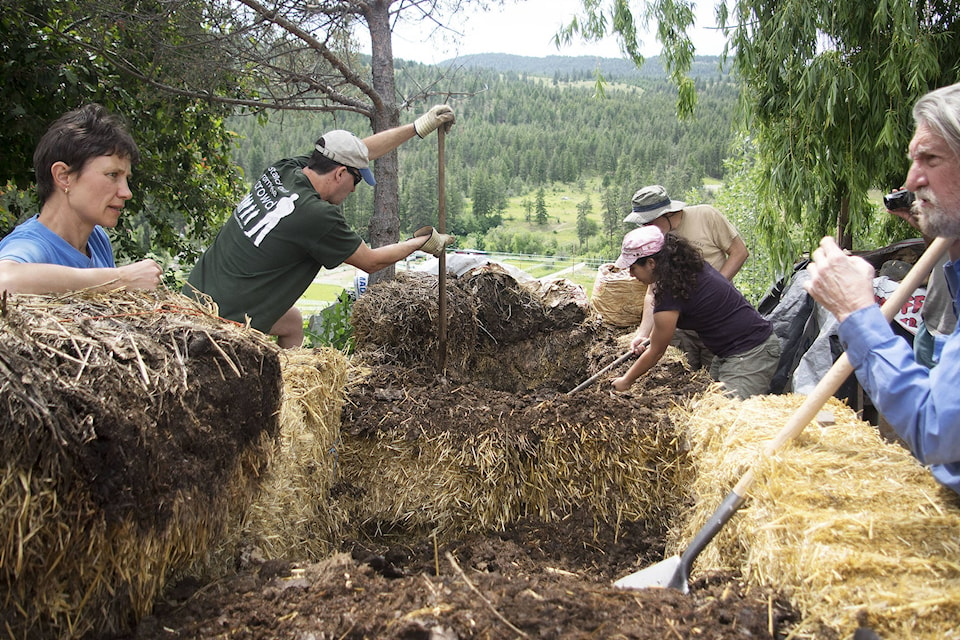Around 30 people armed with shovels and work gloves trekked up the steep hill at the Summerland farm of Jana and Fredy Brunner to get firsthand experience planting the permaculture way during a workshop on June 4.
Participants heard presentations from workshop leader Rick Hatch of Cherry Tree Permaculture and local mycologist Brian Callow of What The Fungus. Students also got hands-on practice composting and planting a forest garden (a symbiotic system of plant layers – including trees, shrubs, groundcover and fungus – that work in harmony to retain water and share nutrients). Lunch included vegan salad dressing and dessert prepared by Summerland nutritionist and cookbook author Victoria Lane of Whole Food Nutrition.
Hatch, who is based in Penticton, designed a system of forest garden swales – ridges that follow the contour of the land for maximum water retention – for the Brunners on their five-acre property in Garnett Valley.
The Brunners chose to implement permaculture principles on their steep hillside farm primarily to retain water, but also “because it works with nature and not against it,” said Jana. They decided to host the workshop to give others a chance to gain knowledge and practical experience.
Hatch defined permaculture (a term coined in the 1970s by Australians Bill Mollison and David Holmgren) as a “positivist design science.”
“Rather than fighting against the negative things in the world that we don’t want, [it’s] focusing on designing and building the world we do want to live in. It’s a subtle change, but it’s a big change in mindset,” he explained.
From urban gardens to large-scale agriculture operations, permaculture principles can address some of the problems occurring in the natural world today.
According to the Food and Agriculture Organization (FAO) of the United Nations, there was a net loss of roughly 129 million hectares of forest between 1990 and 2015 (an area the size of South Africa), with deforestation most heavily concentrated in tropical areas. Deforestation contributes to carbon emissions, soil erosion and loss of habitat, among other things.
The FAO also reports that erosion carries away 25 to 40 billion tonnes of topsoil every year, “significantly reducing crop yields and the soil’s ability to store and cycle carbon, nutrients, and water.”
Clearcutting, monoculture crops and annual tillage contribute to the loss of topsoil, and because of this depletion crops today are less rich in vitamins and minerals than in previous decades.
“Soil is being lost from land areas 10 to 40 times faster than the rate of soil renewal, imperiling future human food security and environmental quality,” David Pimentel wrote in his study Soil Erosion: A Food and Environmental Threat.
Permaculture is based in three ethics: care of the earth (all living and non-living things), care of people (meeting needs in a compassionate and simple way) and return of surplus (also known as “fair share”).
“People care begins with ourselves,” said Hatch. “Once we take care of ourselves, then we become more able to help take care of others. It’s the old concept of putting the oxygen mask first on yourself, and then you can help someone else.
“Once we have our own piece of the pie, and we’ve taken care of our needs, anything beyond that is surplus,” Hatch continued. “The excess of a resource is actually defined as pollution. What I should do with that excess is either give it to someone else who can use it or return it to the earth in some way so that it goes back to feed the earth’s system.”
For more information, visit cherrytreepermaculture.com.
